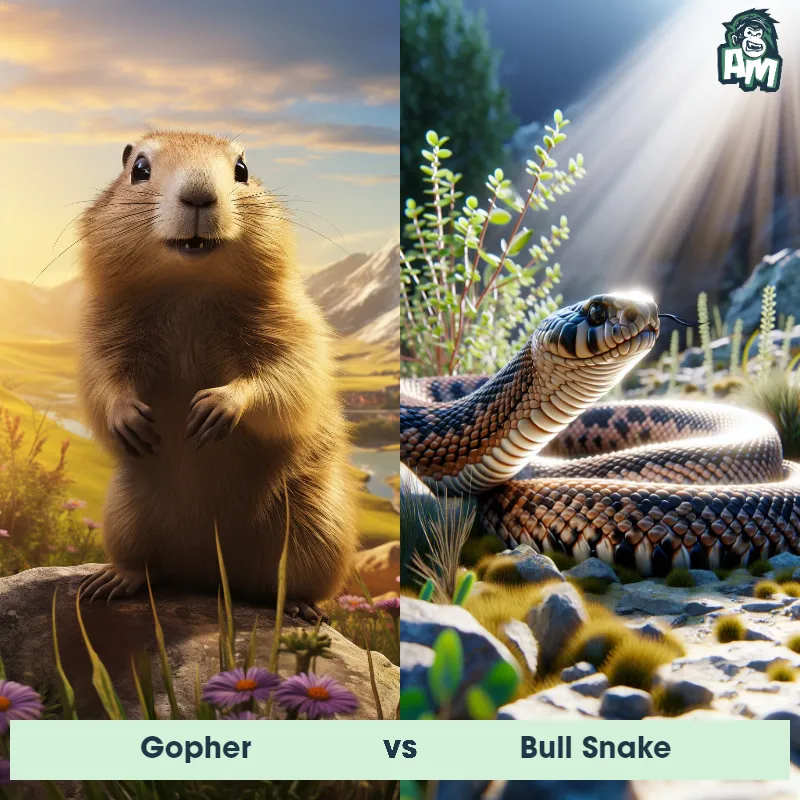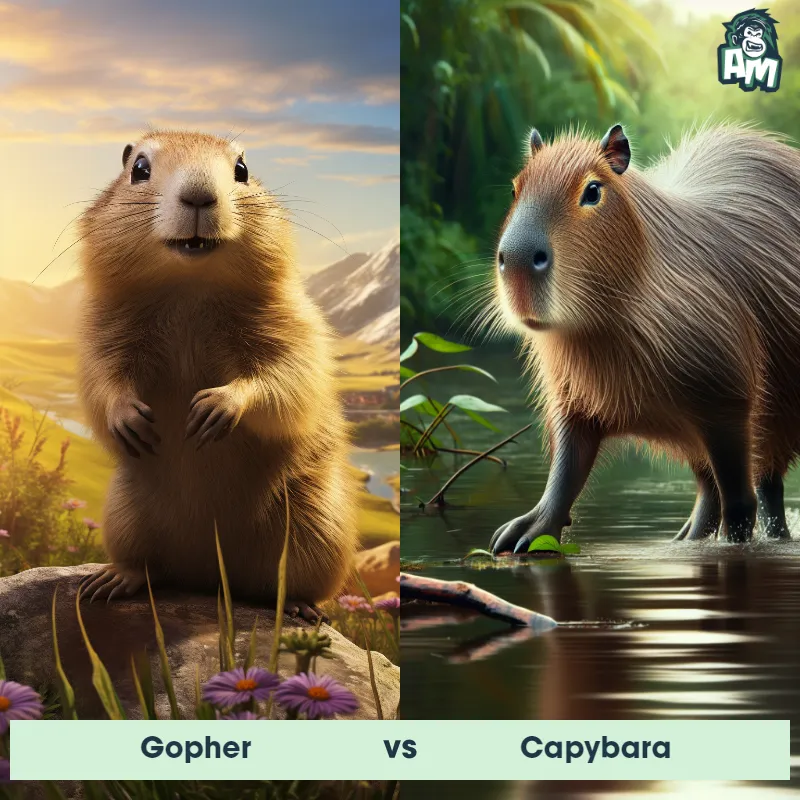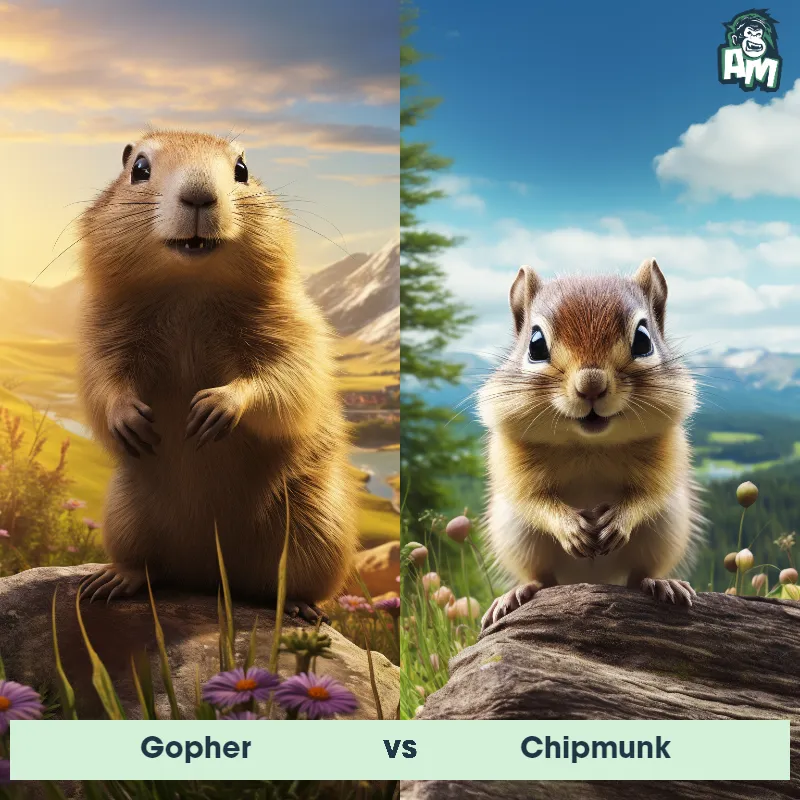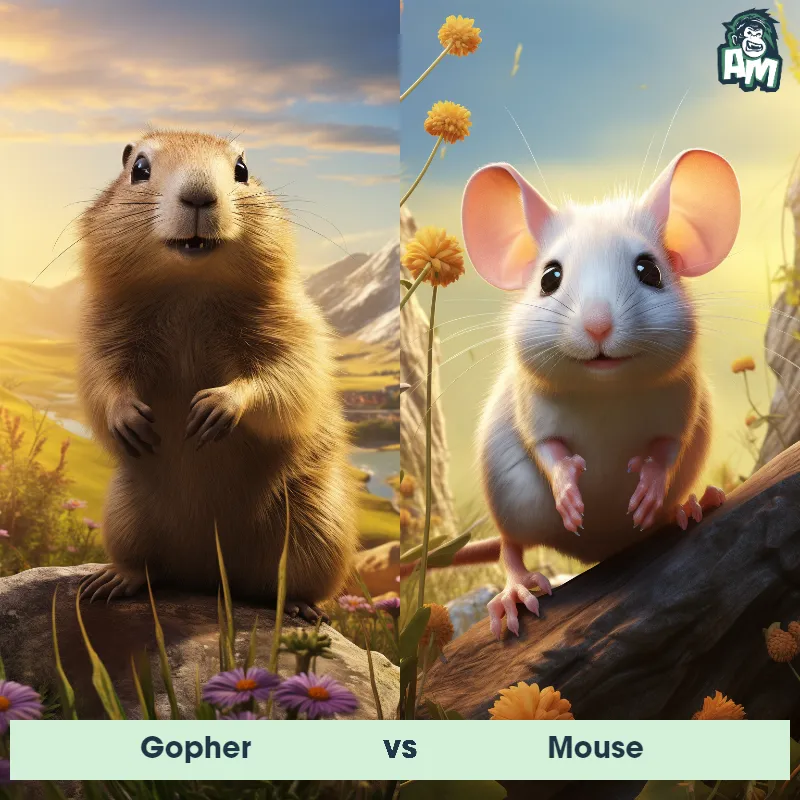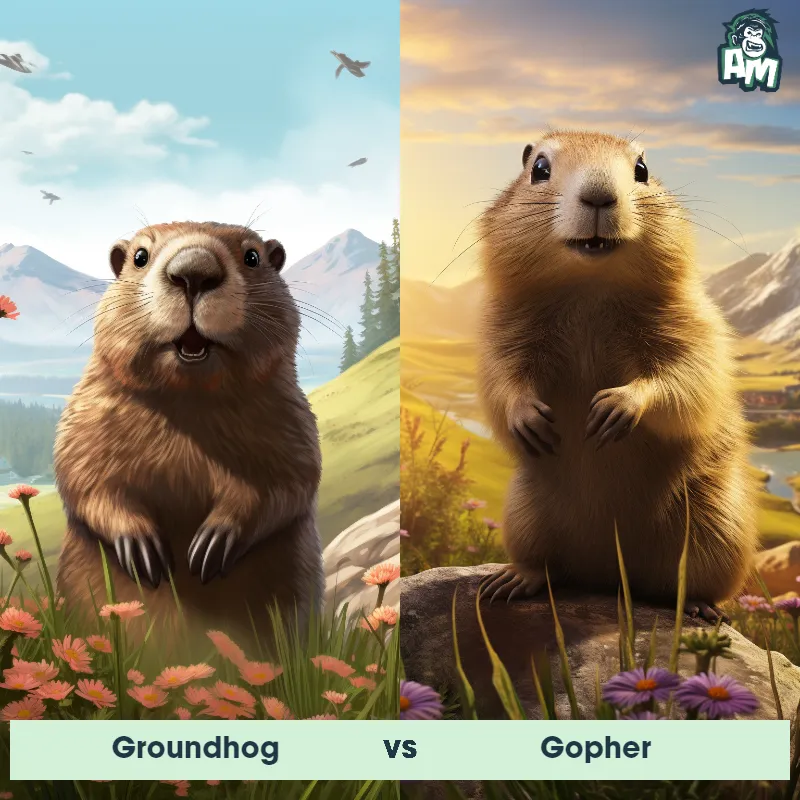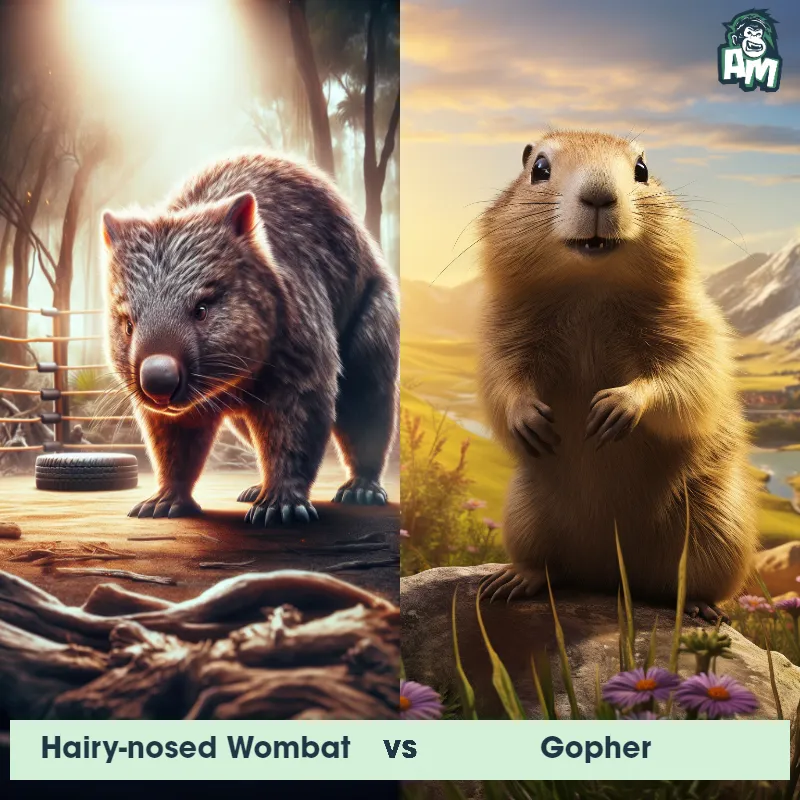The Gopher
The Gopher is a small mammal that belongs to the rodent family. They are typically around 6-8 inches in size and have stout bodies with short legs and small ears. Gophers are known for their powerful front limbs and sharp claws, which they use for burrowing underground. They have small eyes, but their vision is well adapted for tunneling in dark environments. Gophers have fur that varies in color between species, ranging from light brown to dark gray.

| Gopher | |
|---|---|
| Size | 5-14 inches (12.7-35.56 cm) |
| Weight | 0.5-2.2 lbs (0.23-1 kg) |
| Speed | 8mph (13km/h) |
| Key Strength | Strong front legs with large claws for digging and defense |
| Biggest Weakness | Small size and poor eyesight |
| Scientific Name | Geomyidae |
| Family | Rodentia |
| Habitat | Underground burrows |
| Geography | North and Central America |
| Diet | Herbivore, primarily plant roots, bulbs, and other vegetables |
| Lifespan | 1 year - 3 years |

The Gopher
The Gopher is a small mammal that belongs to the rodent family. They are typically around 6-8 inches in size and have stout bodies with short legs and small ears. Gophers are known for their powerful front limbs and sharp claws, which they use for burrowing underground. They have small eyes, but their vision is well adapted for tunneling in dark environments. Gophers have fur that varies in color between species, ranging from light brown to dark gray.
Fun Fact: Despite their small size, Gophers are highly skilled at building extensive underground tunnel systems, which can cover an area of up to 2,000 square feet.
| Gopher | |
|---|---|
| Size | 5-14 inches (12.7-35.56 cm) |
| Weight | 0.5-2.2 lbs (0.23-1 kg) |
| Speed | 8mph (13km/h) |
| Key Strength | Strong front legs with large claws for digging and defense |
| Biggest Weakness | Small size and poor eyesight |
| Scientific Name | Geomyidae |
| Family | Rodentia |
| Habitat | Underground burrows |
| Geography | North and Central America |
| Diet | Herbivore, primarily plant roots, bulbs, and other vegetables |
| Lifespan | 1 year - 3 years |
Gopher Matchups
We use AI to simulate matchups between the Gopher and other animals. Our simulation considers size, strength, and natural predatory behaviors to determine the most likely outcome.
Gopher: Diet, Predators, Aggression, and Defensive Behaviors
What do Gophers eat?
Gophers primarily eat roots, tubers, bulbs, and other underground plant parts. They also consume above-ground vegetation such as grasses, grains, and small insects. Gophers are herbivores and their diet consists mainly of plants found in their burrow systems.
Do Gophers have any predators?
Gophers have a few predators in the wild, including snakes, coyotes, foxes, and owls. These predators primarily hunt for gophers near their burrows or while they are above ground searching for food. Despite having predators, gophers are able to defend themselves by retreating to their underground burrows for safety.
Are Gophers aggressive?
Gophers are not typically aggressive towards humans or other animals. They are mostly solitary creatures that focus on tunneling and foraging for food. However, they can become territorial and defend their burrow systems if they feel threatened or if another gopher attempts to invade their territory.
Do Gophers fight?
Gophers may engage in aggressive behaviors if they encounter another gopher in their territory. They may fight over food, mates, or territory boundaries. However, these fights are typically brief and involve displays of dominance rather than physical combat.
How do Gophers defend themselves?
Gophers have several strategies to defend themselves from predators and other threats. They have sharp claws for digging burrows and escaping underground quickly. Additionally, gophers can emit high-pitched vocalizations to deter predators or warn other gophers of danger. They may also use their teeth and claws to bite and scratch if they feel physically threatened.
What is a Gopher's biggest weakness in a fight?
A gopher's biggest weakness in a fight is their relatively small size and solitary nature. While they may defend their territory aggressively, gophers are not well-equipped for prolonged physical confrontations with larger predators or other animals. Their best defense is often to retreat to the safety of their underground burrow systems.
Fun Fact: Gophers are herbivores and have a voracious appetite, consuming plants, roots, and tubers. They have large cheek pouches that they use to carry food back to their burrows.
Fun Fact: The Gopher's burrowing activities can have a significant impact on the environment. By aerating the soil and mixing nutrients, they contribute to maintaining healthy soil ecosystems.



